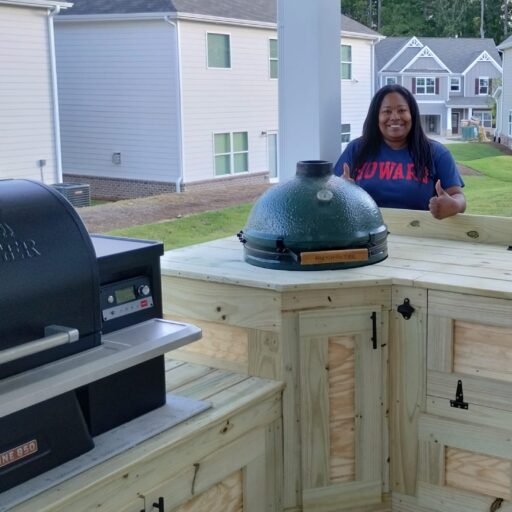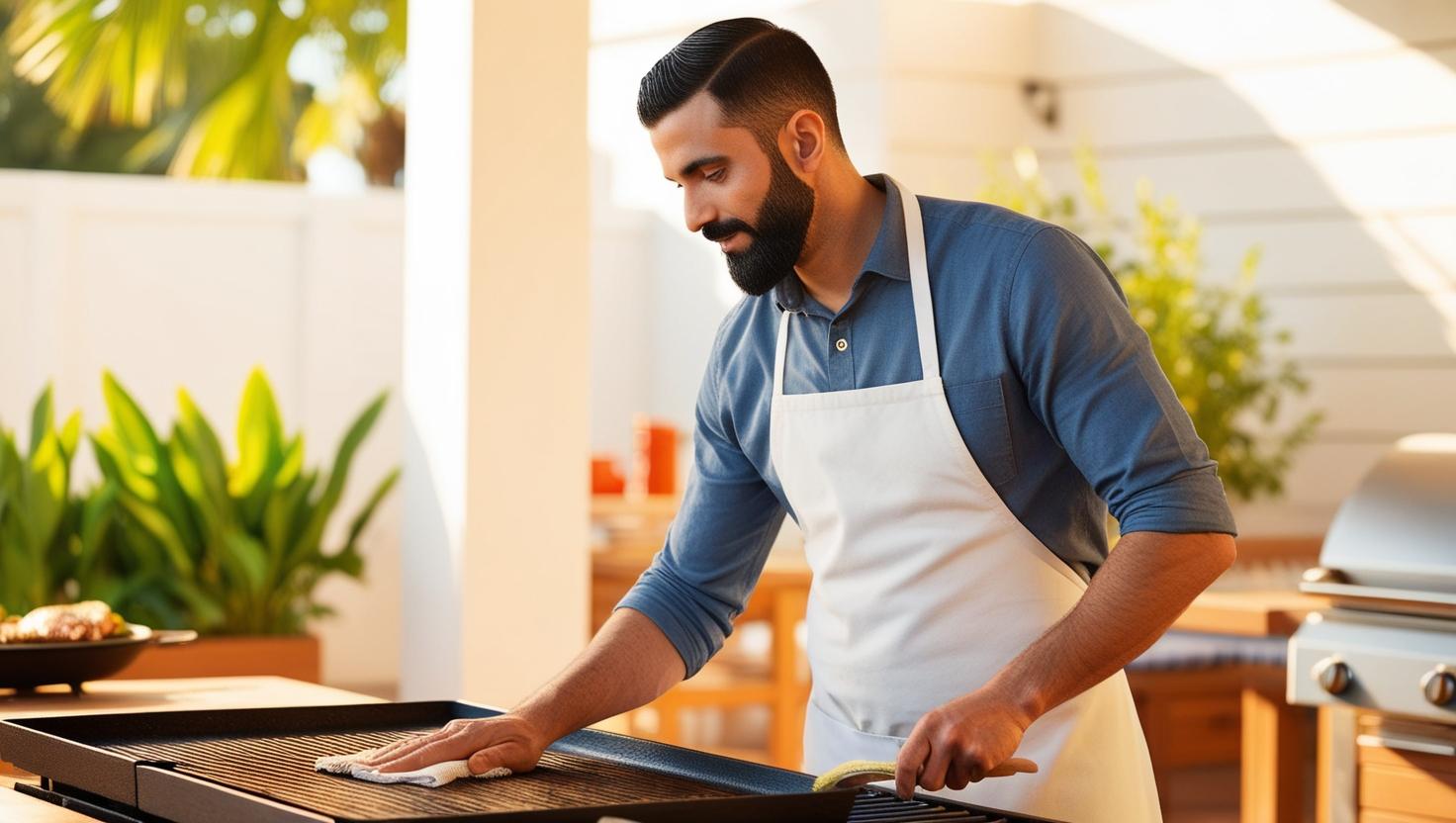A flat top griddle is an amazing outdoor cooking appliance, perfect for cooking a variety of foods with even heat distribution. However, just like a cast iron skillet, your flat top griddle needs to be properly seasoned to ensure it performs at its best and lasts for years to come. Seasoning your griddle is essential not only for creating a non-stick surface but also for preventing rust and extending its life.
In this blog post, we’ll walk you through the step-by-step process of seasoning your flat top griddle and share tips for maintaining that seasoned finish to keep it in top condition.
Why Seasoning is Important
Before we dive into the steps, let’s talk about why seasoning your griddle is essential:
- Non-Stick Surface: Proper seasoning creates a natural non-stick layer, making cooking and cleanup much easier.
- Prevent Rust: The seasoning process helps to protect the griddle from moisture, preventing rust formation.
- Improved Flavor: Seasoning the griddle enhances the flavors of the food you cook, as the surface builds up layers of oil that add depth and richness over time.
Step-by-Step Guide to Seasoning Your Flat Top Griddle
Step 1: Clean the Griddle Thoroughly Before you season your flat top griddle, it’s important to remove any dust, dirt, or manufacturing oils that may be present on the cooking surface.
- Use a mild dish soap and warm water to wash the griddle.
- Scrub the surface with a non-abrasive sponge or cloth. Avoid steel wool or anything too harsh, as it can scratch the surface.
- Rinse and dry thoroughly to ensure no moisture remains on the surface.
Tip: If your griddle has been used previously, give it a good scrub to remove food debris and grease buildup.
Step 2: Heat the Griddle The next step is to heat your griddle so that the oil will bond properly to the surface.
- Turn on the burners or light the griddle and set the temperature to medium-high heat.
- Let the griddle heat up for about 10 to 15 minutes. You’ll want the surface to be hot enough to melt the oil, but not so hot that it burns.
Tip: If you have a large griddle, heat it in sections, moving from one area to another to ensure even heating.
Step 3: Apply a Thin Layer of Oil Choosing the right oil is key to a good seasoning process. Vegetable oil, canola oil, or flaxseed oil are popular choices for seasoning. Avoid using oils like olive oil or butter, as they have lower smoke points.
- Take a clean cloth or paper towel and dip it into your oil of choice.
- Spread a thin, even layer of oil over the entire cooking surface. You don’t need a thick coat – just enough to lightly cover the surface.
- Be sure to coat the sides of the griddle as well, especially if they are exposed to the elements.
Tip: Use tongs to hold the paper towel or cloth to avoid burns from the hot griddle.
Step 4: Let the Oil Burn Off Once the oil is applied, let the griddle cook for about 15 to 30 minutes. The oil will begin to smoke, which is a natural part of the seasoning process. Keep the griddle on medium heat while the oil bonds to the surface.
- Let the oil smoke and gradually disappear as it forms a protective layer.
- Once the smoking stops, turn off the heat and allow the griddle to cool down.
Tip: If you’re seasoning a griddle that’s been used before, you may need to repeat this process a few times to build up a solid layer.
Step 5: Repeat the Process For a good, durable seasoning layer, you’ll want to repeat the oil application and heating process several times, ideally about 3-4 times.
- After the first layer cools down, apply another thin layer of oil.
- Repeat the heating and smoking process for 15 to 30 minutes.
- Continue this process for multiple layers until the griddle turns a shiny, golden-brown color and you’re satisfied with the non-stick surface.
How to Maintain Your Seasoned Flat Top Griddle
Now that your griddle is properly seasoned, it’s important to keep it that way. Regular maintenance will help preserve the seasoning and ensure it continues to perform well for years.
1. Clean After Each Use After cooking, always clean your griddle to maintain its seasoning and prevent any buildup of food or grease.
- Scrape off food debris: Use a griddle scraper to remove any leftover food from the surface. Be gentle to avoid damaging the seasoning.
- Wipe with a damp cloth: After scraping, use a damp cloth or paper towels to wipe the griddle clean.
- Dry completely: Once you’ve wiped it down, make sure the griddle is completely dry to prevent rust from forming.
2. Reapply a Thin Layer of Oil After cleaning, it’s a good practice to apply a very thin layer of oil to the griddle to preserve its seasoning.
- Use a clean cloth or paper towel and apply a thin layer of oil to the surface.
- Heat the griddle briefly to set the oil, then turn it off and let it cool.
3. Avoid Harsh Cleaning Products Never use harsh chemicals or abrasives to clean your griddle. These can strip away the seasoning and cause rust or damage.
- No soap unless absolutely necessary – too much soap can remove the oil layer.
- Avoid using steel wool or abrasive scrubbers.
4. Store Properly If your griddle is exposed to the elements (rain, snow, etc.), cover it when not in use to protect it from moisture and dirt. If possible, store it in a dry area to prevent any rusting.
Troubleshooting Common Griddle Problems
Even with proper care, you may encounter a few issues with your flat top griddle. Here are some quick fixes:
- Rust: If your griddle starts to show signs of rust, it’s usually due to exposure to moisture. To fix this, scrub the rust off using a wire brush or sandpaper, clean the surface, and then re-season it from scratch.
- Uneven Heating: If your griddle is heating unevenly, it may be due to buildup on the cooking surface or improper seasoning. Clean the griddle thoroughly and reapply the seasoning process to ensure an even surface.
- Sticky Surface: A sticky surface is often caused by too much oil or not allowing the oil to bond properly. If this happens, clean the surface, remove excess oil, and repeat the seasoning process.
Conclusion: Keep Your Griddle in Top Shape
Properly seasoning and maintaining your flat top griddle is crucial for ensuring it lasts for years, performs well, and cooks your favorite dishes perfectly every time. By following these steps, you’ll create a non-stick surface that will improve with each use, giving you delicious meals and easy cleanup. Regular care and attention will ensure your griddle remains a reliable tool in your outdoor kitchen for years to come.
Now, you’re ready to fire up your griddle, cook a fantastic meal, and enjoy your perfectly seasoned cooking surface!


Leave a Reply
You must be logged in to post a comment.